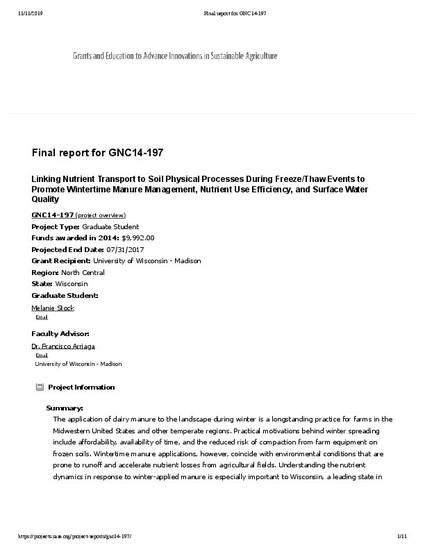
The application of dairy manure to the landscape during winter is a longstanding practice for farms in the Midwestern United States and other temperate regions. Practical motivations behind winter spreading include affordability, availability of time, and the reduced risk of compaction from farm equipment on frozen soils. Wintertime manure applications, however, coincide with environmental conditions that are prone to runoff and accelerate nutrient losses from agricultural fields. Understanding the nutrient dynamics in response to winter-applied manure is especially important to Wisconsin, a leading state in dairy production, where up to 75% of annual runoff volumes occur on frozen and thawing soils. The high potential for winter runoff, hence nutrient transport, has prompted revisions to winter manure regulations, yet little conclusive data exist to guide these changing standards.
